Record collectors may be familiar with the name Frank Banta—a name usually associated with hot novelty and jazz piano of the 1920s, and rightfully so. Banta was born in 1896, and was the son of Frank P. Banta, also a pianist, quite a famous one in his day. Frank P. was one of the dozen or so regular pianists that accompanied several thousands of records in the 1890s and 1900s.
Frank P. Banta was born in 1870, and came from curious beginnings, growing up in the heart of Hell’s Kitchen, with a dirt poor father named John and a Dutch heiress named Fannie. After some detailed ancestry digging, it becomes clear that Frank’s mother’s family were wealthy people. Their family names were Darrow and Westervelt, both respectable Dutch New York names that went back several generations even in the 1870s when Frank P. was growing up.
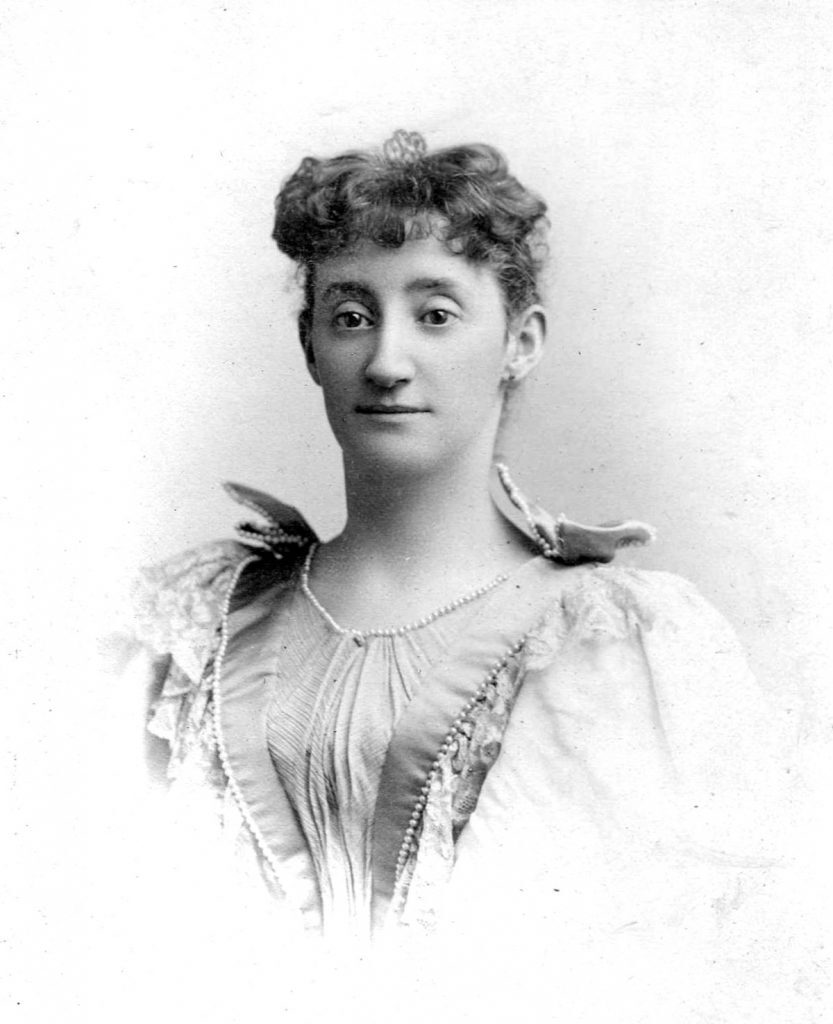
Many professional portraits of Frank’s cousins and aunts reveal their riches, as in each of these photographs they are all dressed in fine clothing that only Gilded Age socialites could afford. It was his mother’s wealth that kept the family moving along while old John worked at carving wood (maybe for pianos). Frank took after his mother’s family, not just in his diligence but in appearance and character.
As a child and teenager, Frank showed remarkable talent on the piano, and with this talent he became a piano tuner, as he was also blessed (or cursed) with perfect pitch. He was soon making the rounds playing accompaniments in vaudeville houses and in clubs. He grew into a striking young man, very much resembling his aunts with his big expressive black eyes, unruly cowlicked black hair, long neck and pointed nose, thin face, and a heartwarming smile. His cartoonish yet attractive appearance proved well for stage recruiters and booking agents, but his piano playing also helped this of course.
Around 1888, at the tender age of 18, he started to show up in theatrical publications, being listed with big names, and within the next year he was performing with banj0ist Vess L. Ossman. Ossman took an immediate liking to Banta, getting him booked as his accompanist for nearly every show. Ossman’s impeccable plucking skill blended so well with Banta’s smooth and metronomic rhythm, and this was exactly what Ossman so desired of an accompanist. The audiences adored the two of them, and soon Ossman used Banta as his exclusive accompanist, being specifically advertised together.
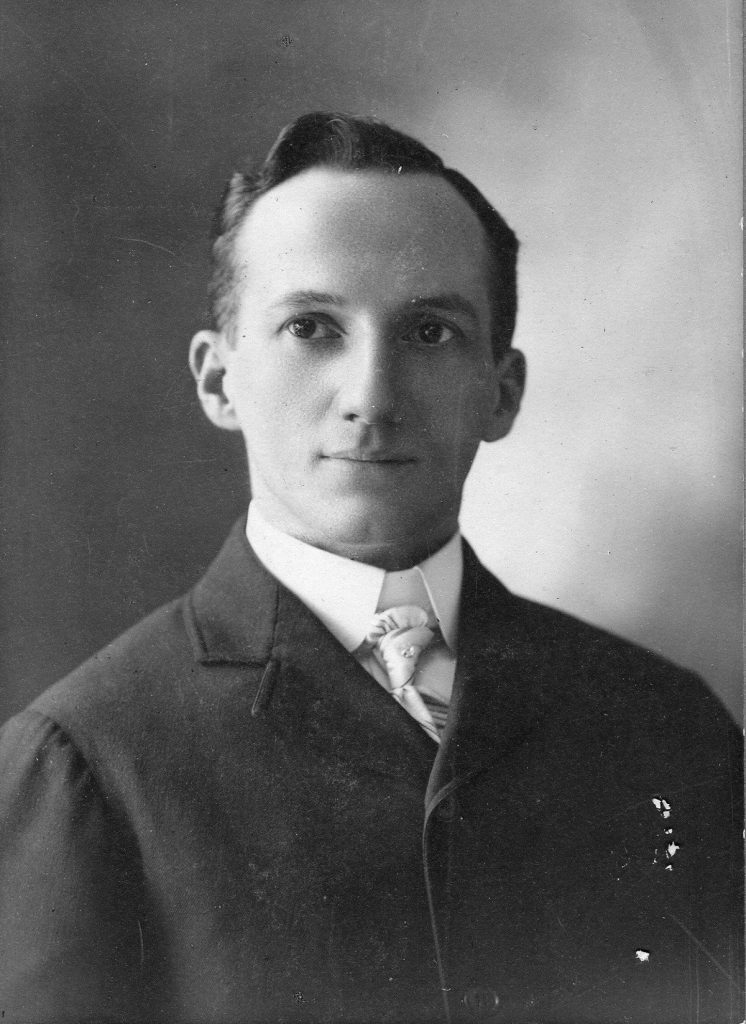
Other talent seekers were beginning to take note of this young gifted accompanist, and in 1892 he was approached by the North American Phonograph Company. In July of 1892, he along with accompanist Charles Prince (later of Prince’s band fame) made their first bunch of records, accompanying singer Dan W. Quinn.
Quinn likely used Banta as his accompanist before these records were made, and in the next decade he and Banta would become close friends. By 1893, Banta was one of North American and Edison’s regular accompanists, working alongside the admirable Edward Issler. An 1893 article in The Sun quoted a characteristic line from Banta, exhibiting his freakish ability to play anything by ear. A new phonograph singer forgot their music, in reply these were his words:
“That doesn’t matter…just hum it over once and I’ll catch it.”
His wit and talent were truly captured by this single line.
By the mid 1890’s, Banta was a favorite among the studio workers, as he was industrious, reliable, quiet, and obedient. He was a model of propriety for the accompanist, and with a few witty words between takes he was beloved by all. At this time he formed a small orchestra (most likely consisting of Edward Issler-chosen musicians), and with this orchestra under his own name they made some records that were mostly of your typical small orchestra pieces, such as The Anvil Chorus and “Her Golden Hair was Hanging Down her Back.”
By 1897, the orchestra had been abandoned, and Banta was working for Edison and the Berliner gramophone company. Around this time Banta was beginning to work more onstage with Ossman’s greatest banjo rival, Ruby Brooks. Brooks was becoming a prominent publisher and booking agent, and he wanted to help Banta get more work, attempting to lure him away from the overbearing and demanding Ossman. Banta with his charm and tact was able to balance his time with them both, then being listed on the bill with both of them.
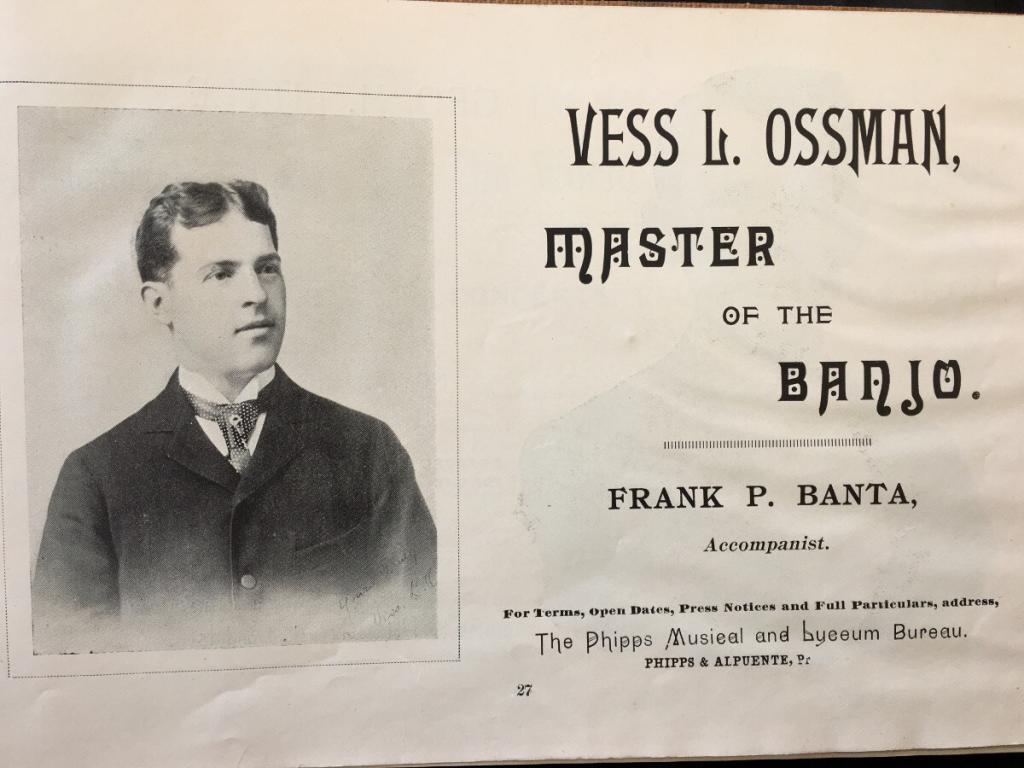
While living between Brooks and Ossman onstage, he was able to balance his time with Edison and Berliner in the late 1890’s. It was from 1897 to 1900 that he was working the most, while working for two major record companies and working in the theater at night, he got in some time to publish a few pieces, one of them being his most popular, “Ragged William.”
This piece was the first of its kind, a rag-time arrangement of the William Tell overture. Banta played the original piece with Ossman often, it was said to have been one of their most requested numbers. One night he decided to play it in rag-time behind Ossman, as he was then known to do so (he had been for a few years by then). His quirky arrangement was taken to Brooks and Denton to be published in 1899. At this time he was leading the Metropolitan Orchestra on Berliner and the Peerless Orchestra on Edison, both of which he played piano and wrote arrangements for.
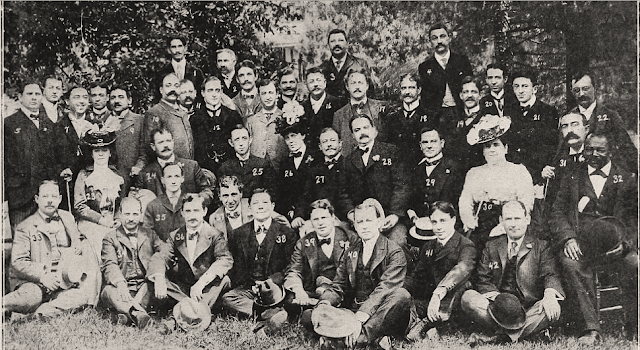 By 1900, Banta was starting to feel the effects of his many commitments. While all of this recording and stage work was going on, he had a wife, son, servant girl, and a daughter on the way. In 1900 42 of Edison’s prominent recording stars traveled out to Mr. Edison’s estate to take a large group photo. Of these 42 people, there are three accompanists, and Banta was one of them. He was already looking tired out and sickly, even with his direct stare and Mona Lisa smile. He was only 30 when that picture was taken, and his work was already taking a toll on his already weakened physique. Even with his sickly private life, he kept his smile and industrious nature, and the latter was all the studio workers saw.
By 1900, Banta was starting to feel the effects of his many commitments. While all of this recording and stage work was going on, he had a wife, son, servant girl, and a daughter on the way. In 1900 42 of Edison’s prominent recording stars traveled out to Mr. Edison’s estate to take a large group photo. Of these 42 people, there are three accompanists, and Banta was one of them. He was already looking tired out and sickly, even with his direct stare and Mona Lisa smile. He was only 30 when that picture was taken, and his work was already taking a toll on his already weakened physique. Even with his sickly private life, he kept his smile and industrious nature, and the latter was all the studio workers saw.
In 1900 he joined the newly formed Victor talking machine company, and not surprisingly he was their main accompanist. For the next two years he led the Metropolitan orchestra on Victor, and continued on as Edison’s most valued worker. By early 1903, he was very sickly and was forced to quit most of his stage work, eventually doing the same for Victor. By the middle of 1903 his employment was solely at Edison. As 1903 started to come to a close, he was bed ridden more often and more fragile. Back in May of that year, he made a single piano solo for Edison of his own arrangement of the popular piece “Violets.” The Edison management were hesitant to release the record, so they held off on its release until December.
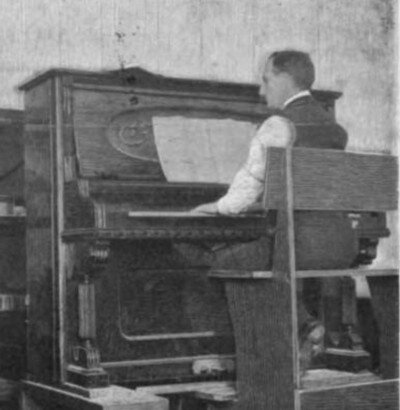
On the morning of November 30, 1903, the Edison studio workers were awaiting the usual arrival of Banta, but as they kept waiting, something seemed strange. He never showed up. His wife Elizabeth came to inform them that her husband had died early that morning. After learning of Banta’s death, all the Edison workers didn’t return to work for the next few days in mourning. He was only 33, leaving a wife, son, and daughter to fend for themselves. His wife Elizabeth worked as a secretary for the Edison offices in the last few years of Frank’s life, but she abandoned the job to work in a corset shop after 1903. She never remarried.
Much of the popularity of records with piano accompaniment halted after Banta’s death, but his legacy remained because of his son of the same name and those who so fondly remembered him in the succeeding decades. Dan W. Quinn glowingly recalled Banta in his letters to researcher Jim Walsh; he even honored Banta by naming his youngest child after him.
R. S. Baker has appeared at several Ragtime festivals as a pianist and lecturer. Her particular interest lies in the brown wax cylinder era of the recording industry, and in the study of the earliest studio pianists, such as Fred Hylands, Frank P. Banta, and Frederick W. Hager.






















